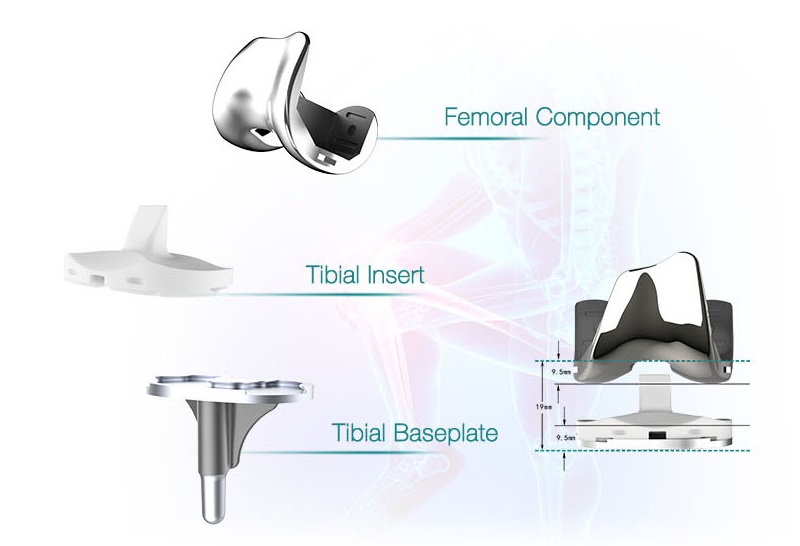Knee Prosthesis are an important treatment option for severe knee injuries or degenerative diseases such as osteoarthritis, aiming to restore patients’ mobility and improve their life quality. It is crucial to understand the components of knee prosthesis.
Usually knee joint prosthesis consists of several key components: femoral component, tibial component, patella component etc. Today we want to introduce the three components.
Femoral Component: This is the part of the prosthesis used to replaces the femur (thigh bone). It is typically made of metal, such as a cobalt-chromium alloy or titanium alloy, and is designed to resemble the natural shape of the femur. The femoral component is crucial for providing stability and support during movement.
Tibial Prosthesis: It is used to replace the tibia (shinbone). It typically composed of a metal base plate and a polyethylene liner, which provides weight-bearing support. This prosthesis is crucial for weight distribution and shock absorption during activities such as walking or running.
Patella Prosthesis: It is used to replace the patella and is typically made of polyethylene. Its design allows it to slide smoothly alongside the femoral prosthesis, therrby achieving natural knee joint movement. Proper alignment of the patellar prosthesis is crucial for preventing complications and ensuring optimal function.
In summary, the various components of a titanium knee prosthesis work together to simulate the natural function of the knee joint. The continuous progress in materials and design has significantly improved the performance and durability of knee joint prosthetic, bringing hope and improved mobility to countless patients worldwide. Understanding these components helps patients make informed choices about their treatment options.
Post time: Oct-31-2025

